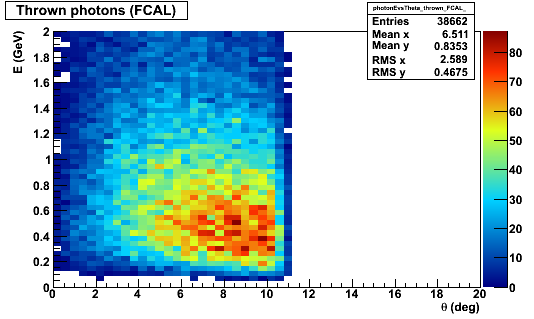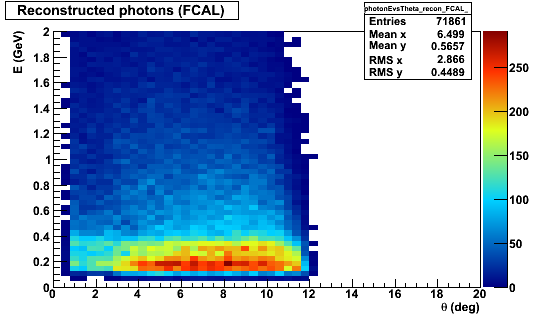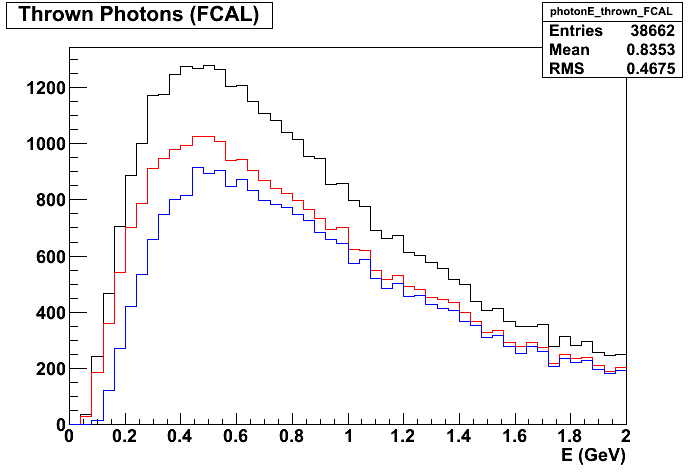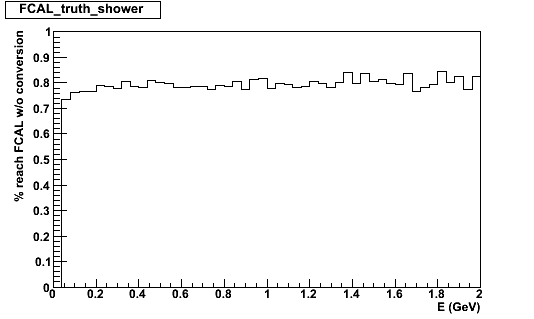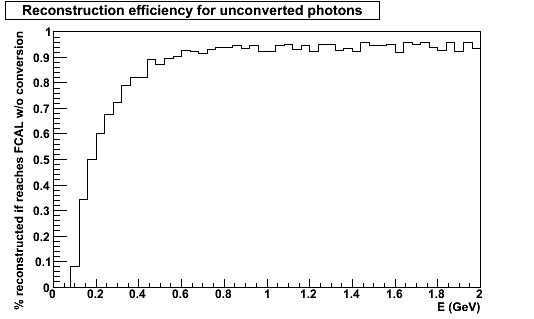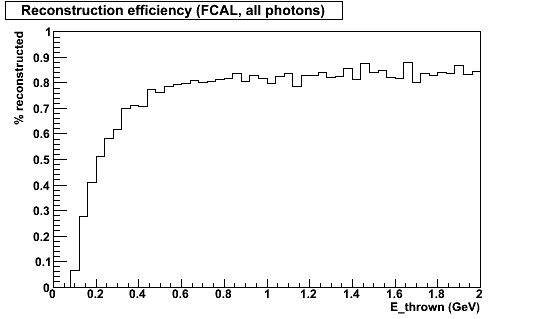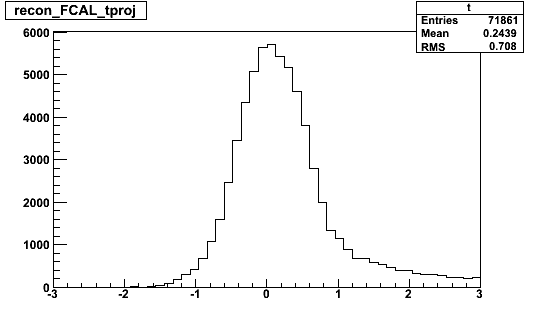FCAL Reconstruction in b1pi events 03/14/2012
This is mostly an update of FCAL Reconstruction in b1pi events 03/06/2012, but using svn rev 8894, which includes changes to the cluster to charged track matching code.
50,000 b1pi events. No EM background.
Contents
Thrown photons
Reconstructed photons
(after vetoing clusters matched to charged tracks)
Questions
- Why are so many "photons" reconstructed? How can we reduce this?
- What is the actual reconstruction efficiency?
- How many photons reach the FCAL without converting?
- Efficiency for non-converting photons?
- Can we recover converted photons?
- Energy resolution, etc.
1 GeV photon events
Mihajlo in GlueX-doc-823 (2007) says for 1 GeV photons:
- 37% photon conversion before FCAL
- 99.6% efficiency for photons that reach FCAL
- Taking into account single clusters from photons that converted close to the FCAL face, the overall photon reconstruction efficiency was estimated to be 77%
- 4% energy resolution at 1 GeV
Efficiency
Energy distribution of thrown photons:
- Black=all thrown photons
- Red=photons which reach the FCAL without converting (determined using DFCALTruthShower object)
- Blue=photons which reach the FCAL without converting AND are reconstructed successfully (fabs(theta_thrown - theta_recon) < .006 && fabs(phi_thrown - phi_recon) < .15)
Red/Black=% of photons that reach FCAL without converting:
Roughly 20% of photons convert before reaching FCAL. Relatively constant across wide range of energy. There is an angular dependence, not shown here. Big improvement since 2007 (geometry change?)
Unconverted photons
Blue/Red=
Above 1 GeV, 94% of unconverted photons are reconstructed. This is less than the 99.6% reported for single photon sample; this difference is due to photon showers rejected due to overlap with charged particle shower.
Below ~600 MeV, efficiency drops. This is due to showers contained within a single cell, which means no cluster is created.
Overall FCAL reconstruction efficiency considering only unconverted photons: 70%. Could be higher after trying to recover photons that convert.
After conversion
For photons that do convert, we use different criteria to determine if a photon is reconstructed "successfully": (E_recon - E_thrown)/E_thrown < 3.5*sigma_E && fabs(theta_thrown - theta_recon) < .01 && fabs(phi_thrown - phi_recon) < .2), where sigma_E=0.062/sqrt(E) as calculated below.
Total FCAL efficiency: ~77%
More can be done here? Where do photons convert? Can split clusters be re-merged?
Extra photon problem
Use a timing cut (t_shower-t_flight) < 1.2 ns to cut out of out-of-time particles:
Timing cut reduces average number of "photons" per event from 1.44 to 1.16. (actually 0.77 photons should hit the FCAL per event)
Timing cut has negligible effect on efficiency.
